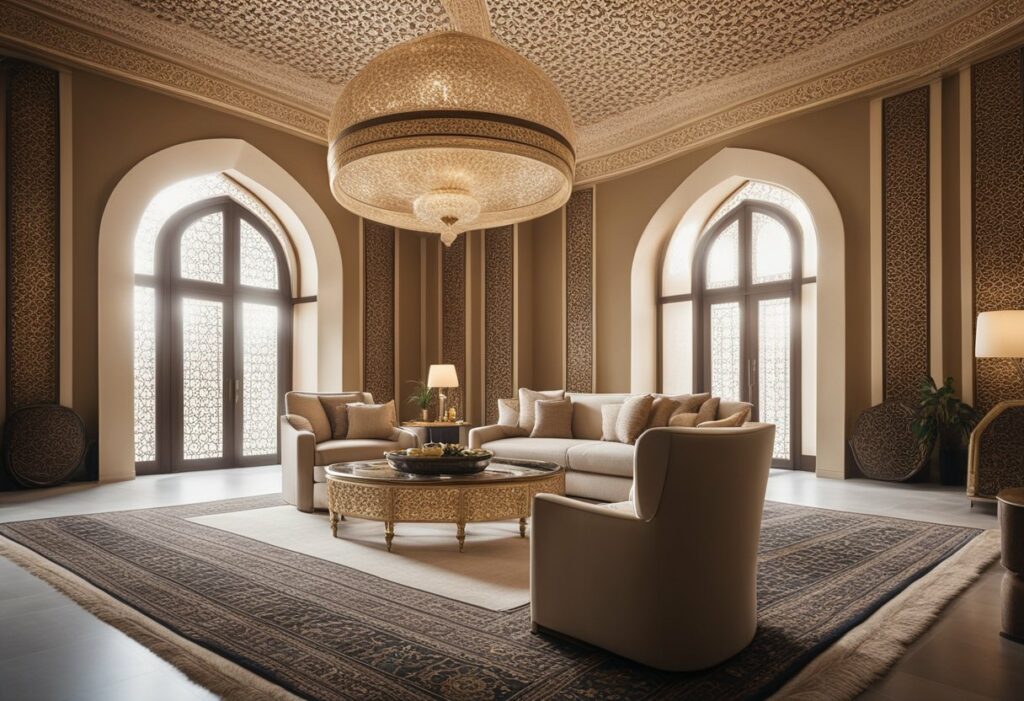Modern Islamic Interior Design: Blending Tradition with Contemporary Style
Modern Islamic interior design is a beautiful and fascinating style that blends traditional Islamic elements with contemporary design. It is a style that has been gaining popularity in recent years, as people look for ways to incorporate their cultural heritage into their homes while still keeping up with modern trends. Whether you are looking to create a peaceful and serene atmosphere in your home or simply want to add a touch of elegance and sophistication, modern Islamic interior design can help you achieve your goals.
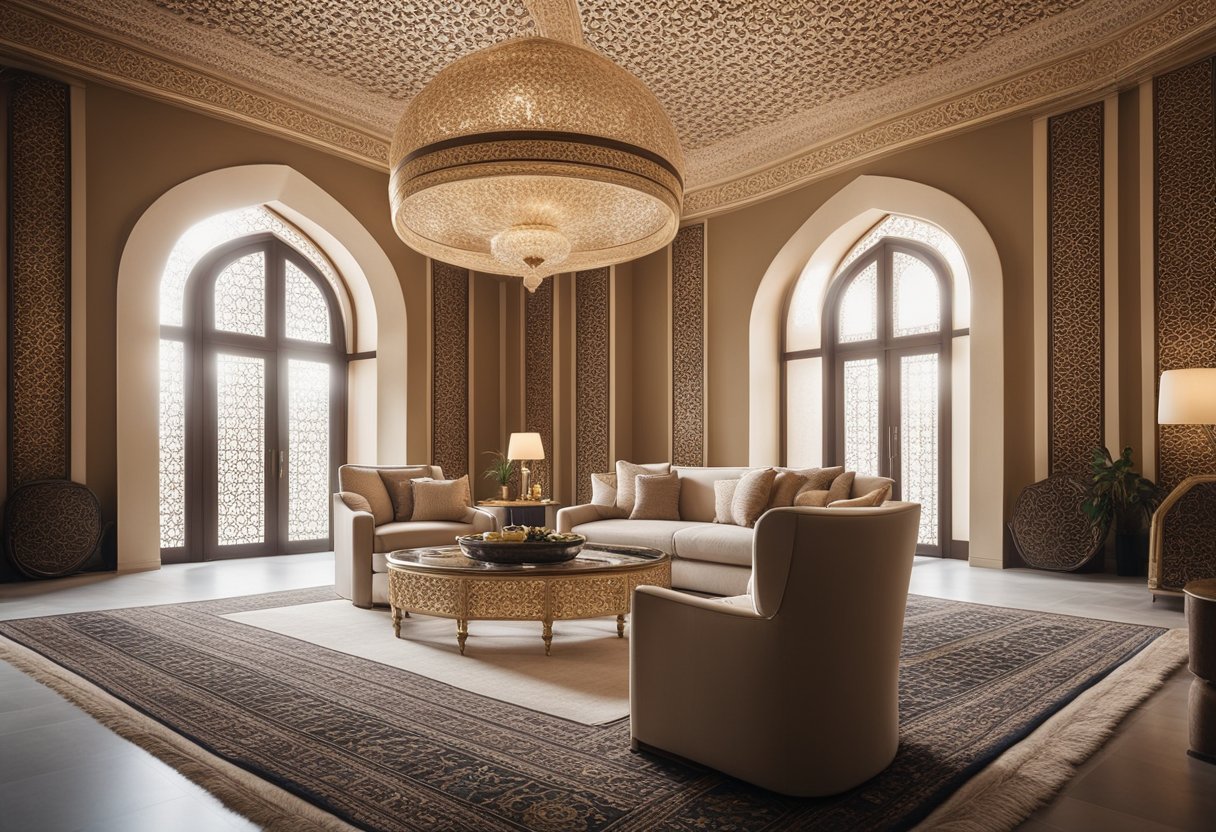
The foundations of modern Islamic interior design are rooted in the Islamic style, which has been around for centuries. This style is characterized by its use of geometric patterns, calligraphy, and intricate designs that are meant to reflect the beauty of the natural world. It is a style that is based on the principles of simplicity, balance, and harmony, and it is designed to create a sense of peace and tranquility in the home.
Contemporary elements and materials are often used in modern Islamic interior design to give the style a fresh and modern look. This can include the use of clean lines, natural materials, and neutral colours, as well as the incorporation of modern technology and lighting. By combining traditional Islamic elements with contemporary design, modern Islamic interior design offers a unique and beautiful way to create a home that is both stylish and meaningful.
Key Takeaways
- Modern Islamic interior design is a beautiful and fascinating style that blends traditional Islamic elements with contemporary design.
- The foundations of modern Islamic interior design are rooted in the Islamic style, which has been around for centuries.
- Contemporary elements and materials are often used in modern Islamic interior design to give the style a fresh and modern look.
Foundations of Modern Islamic Interior Design
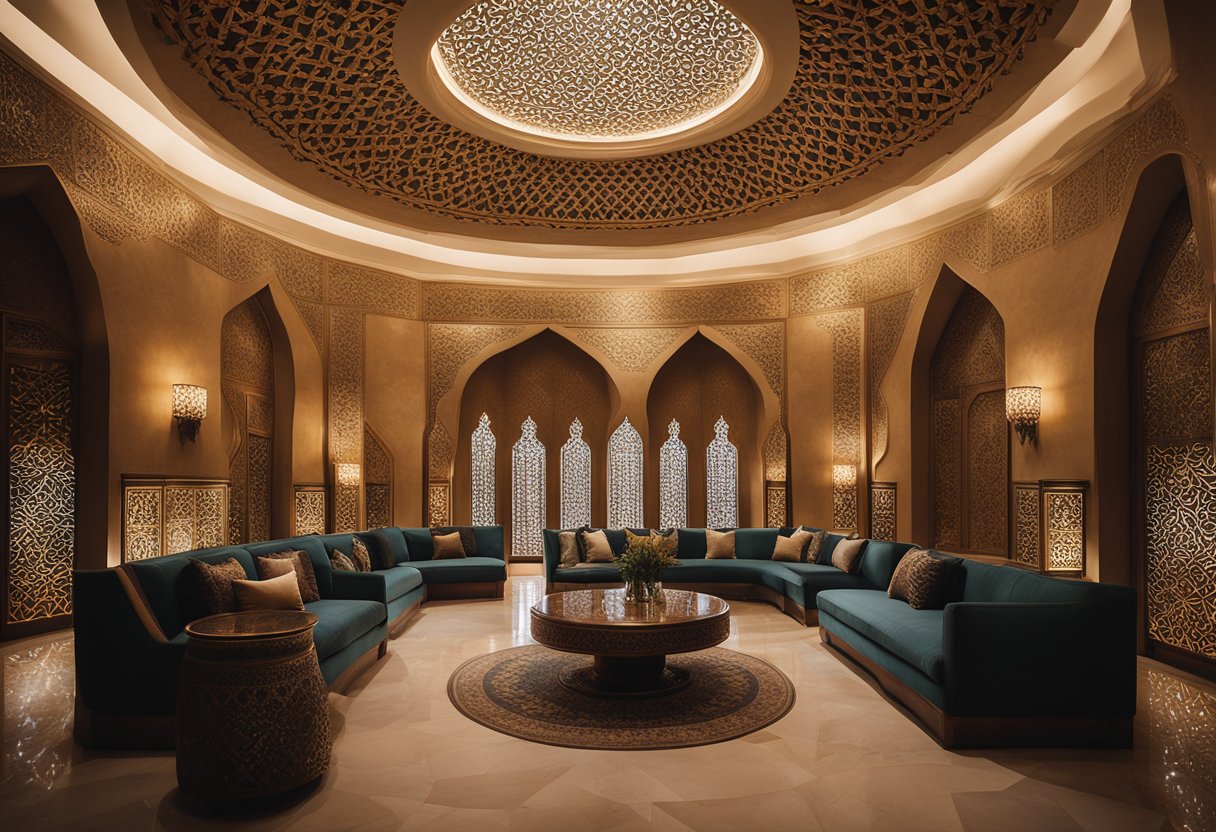
If you’re looking to design a modern Islamic interior, it’s important to understand the foundations of this style. Modern Islamic interior design is a combination of traditional Islamic styles and contemporary design elements. It’s a beautiful and unique style that can be found in many parts of the world, including Saudi Arabia, Turkey, India, and Iran.
Historical Influence and Evolution
Islamic interior design has a rich history that dates back centuries. The Alhambra in Spain is a great example of Islamic architecture and design. The intricate patterns and geometric shapes found in the Alhambra are still used in modern Islamic interior design today. Over time, Islamic design has evolved, but it still maintains its distinctive style.
Principles of Islamic Aesthetics
Islamic aesthetics are based on the principles of harmony, unity, rhythm, and proportion. These principles are reflected in Islamic interior design. The use of geometric shapes and patterns is a common feature in Islamic design. The Quran also plays a significant role in Islamic aesthetics. Many Islamic designs feature calligraphy and other Quranic verses.
Cultural Significance in Design
Islamic interior design is deeply rooted in Muslim culture. The design of a Muslim home or mosque is influenced by the principles of prayer and spirituality. Many Islamic designs feature elements that are meant to inspire reflection and contemplation. The use of light, water, and other natural elements is also common in Islamic design.
In summary, modern Islamic interior design is a unique and beautiful style that combines traditional Islamic styles with contemporary design elements. The foundations of this style are rooted in the principles of harmony, unity, rhythm, and proportion. Islamic interior design is deeply rooted in Muslim culture and is influenced by the principles of prayer and spirituality.
Contemporary Elements and Materials
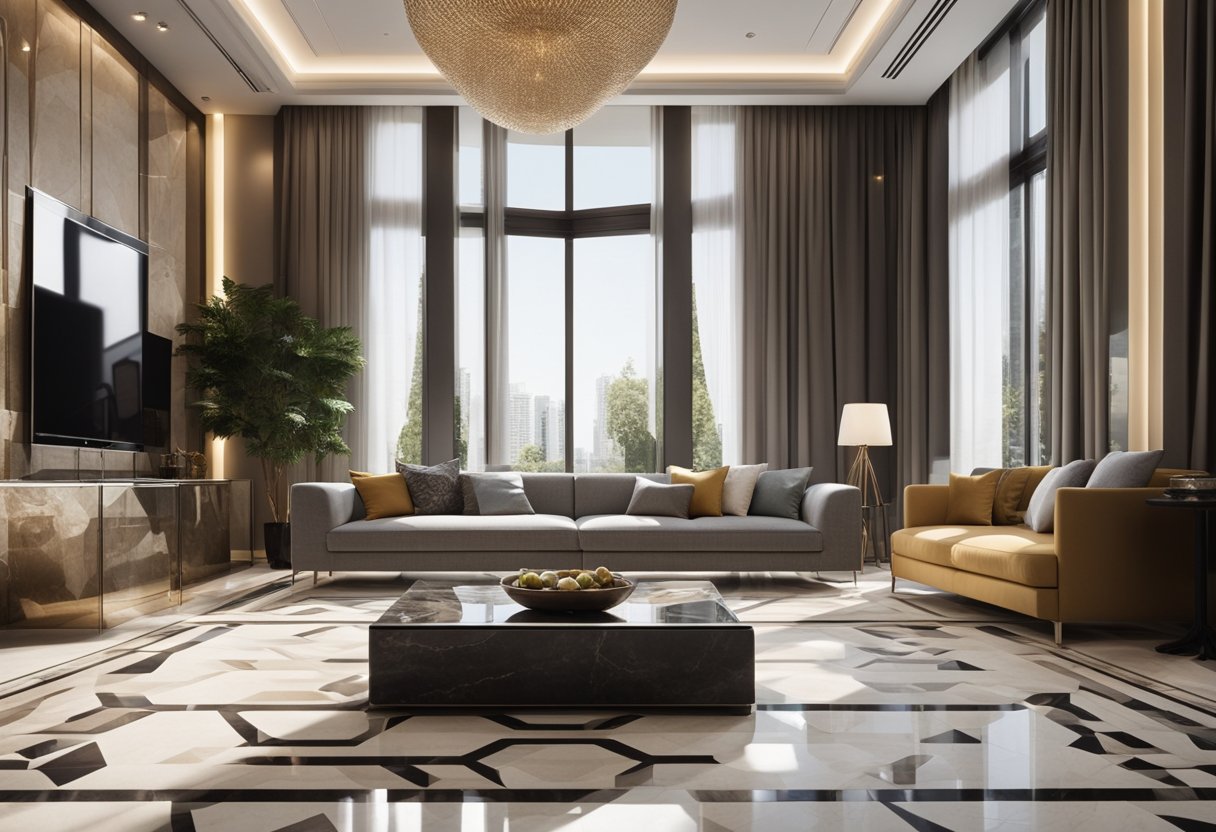
If you’re looking to create a modern Islamic interior design, then you’ll need to incorporate contemporary elements and materials into your vision. In this section, we’ll explore some of the key features that make up this style.
Geometric Patterns and Ornamentation
One of the most striking features of modern Islamic interior design is the use of geometric patterns and ornamentation. These can be found in everything from ceiling designs to rugs and latticework. Calligraphy is also often incorporated into the design, adding a touch of elegance and sophistication.
Innovative Use of Materials
To create a modern Islamic interior, architects and designers are increasingly turning to innovative materials and techniques. Stone, gold, and white marble are popular choices, and Moroccan style is often incorporated into the design. Persian rugs are also a common feature, adding warmth and texture to the space.
Fusion of Tradition and Modernity
Perhaps the most exciting aspect of modern Islamic interior design is the way it fuses tradition and modernity. Plush furniture and contemporary lighting fixtures are often paired with traditional elements such as lanterns and intricate details. The result is a space that is both timeless and current, elegant and comfortable.
Overall, modern Islamic interior design is a beautiful and exciting style that offers endless possibilities for creating a space that is truly unique. By incorporating contemporary elements and materials, and fusing tradition and modernity, you can create a space that is both elegant and comfortable, and sure to impress.
Frequently Asked Questions
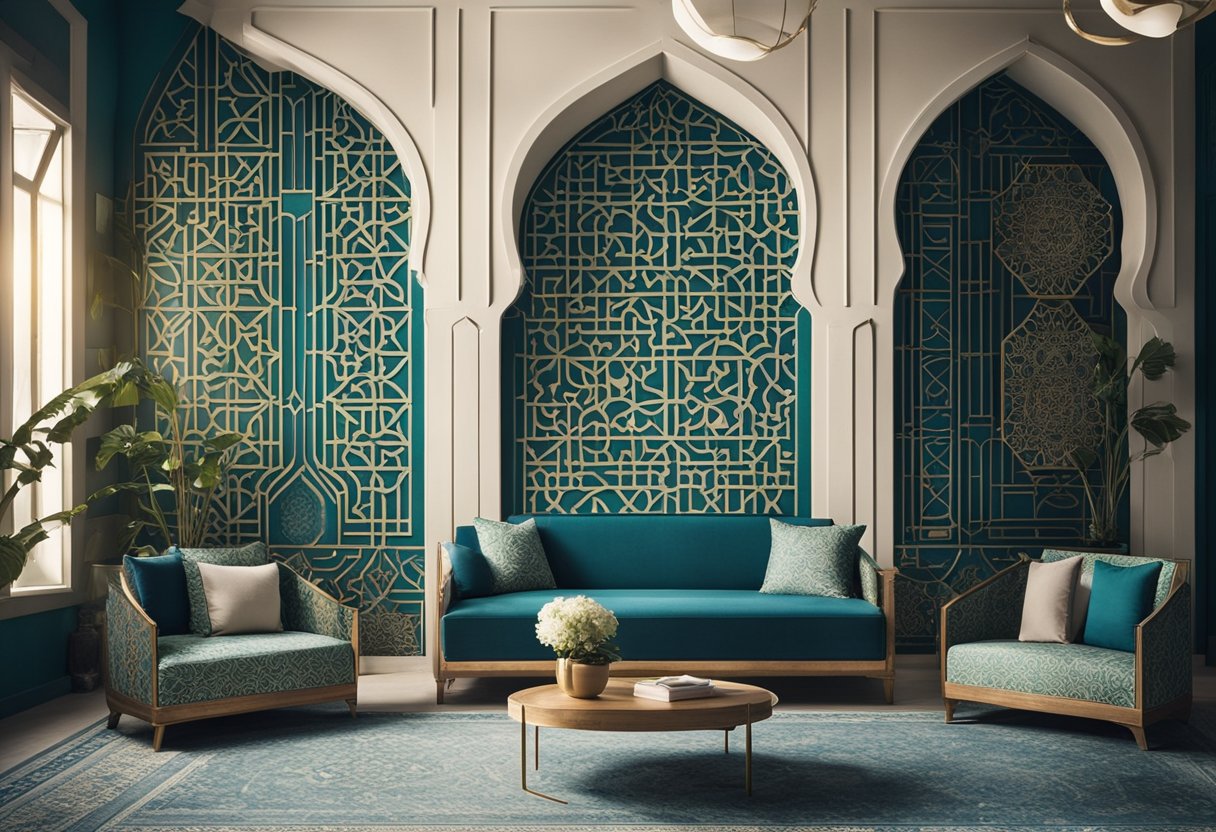
How can one infuse Islamic motifs into a contemporary living space?
Incorporating Islamic motifs into a contemporary living space can be done in many ways. You can use geometric patterns, which are a hallmark of Islamic art, to create a modern look. You can also use Arabic calligraphy, which is another essential element of Islamic art, to add a touch of elegance to your space.
What elements define the essence of an Islamic-inspired modern home?
Islamic-inspired modern homes are defined by their minimalism, elegance and simplicity. They typically feature clean lines, neutral colours, and a focus on natural materials. Islamic-inspired homes also incorporate geometric patterns, calligraphy, and other Islamic motifs into their design.
Which materials are commonly used to craft an Islamic aesthetic in interior design?
Islamic aesthetics are often crafted using natural materials such as wood, stone, and marble. These materials are commonly used in Islamic architecture and design and are ideal for creating a warm, inviting atmosphere. Metalwork is also an important element of Islamic design and can be used to create decorative pieces that add a touch of elegance to your space.
In what ways can Islamic calligraphy be incorporated into modern home decor?
Islamic calligraphy can be incorporated into modern home decor in many ways. You can use calligraphy to create wall art, or you can use it to decorate furniture and other decorative pieces. You can also use calligraphy to create patterns that can be used in textiles, such as curtains and cushions.
How does modern Islamic interior design blend with Western architectural principles?
Modern Islamic interior design can blend seamlessly with Western architectural principles. The clean lines and minimalism of modern Islamic design can complement the simplicity of modern Western design. Additionally, the use of natural materials in Islamic design can be used to create a warm and inviting atmosphere that is often lacking in modern Western design.
Can you suggest some vibrant colour schemes for a modern room with Islamic design influences?
For a modern room with Islamic design influences, you can use vibrant colours such as deep blues, rich greens, and warm oranges. These colours can be used in textiles, such as curtains and cushions, to create a bold and vibrant look. You can also use these colours in wall art and decorative pieces to add a pop of colour to your space.

